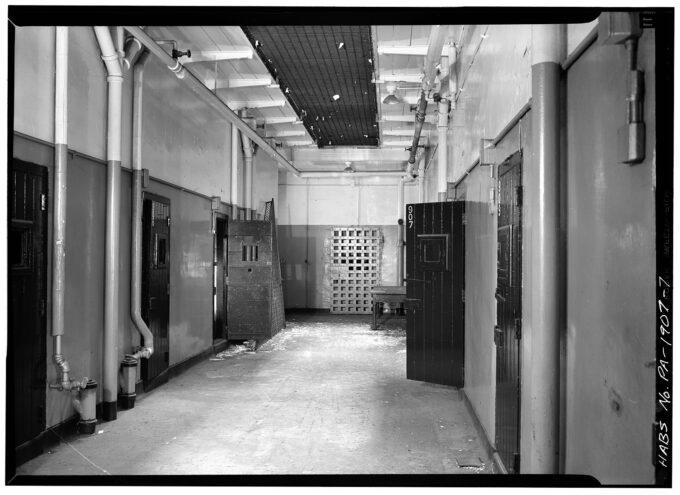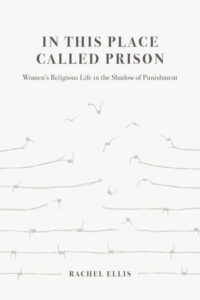
Photograph Source: Library of Congress – Public Domain
In This Place Called Prison offers a vivid account of religious life within an institution designed to punish. Rachel Ellis conducted a year of ethnographic fieldwork inside a U.S. state women’s prison, talking with hundreds of incarcerated women, staff, and volunteers. Through their stories, Ellis shows how women draw on religion to navigate lived experiences of carceral control. A trenchant study of religion colliding and colluding with the state in an enduring tension between freedom and constraint, this book speaks to the quest for dignity and light against the backdrop of mass incarceration, state surveillance, and American inequality.
Why study religious life in prisons?
We think of prisons in the United States as secular institutions. We imagine that religion has no place in state-sponsored punishment. I wrote this book to challenge those assumptions—to show that religion plays  a central role in the experience of punishment for many incarcerated people. For one, historians tell us that religious leaders and reformers played a key role in shaping incarceration as we know it. In the 18th and 19th centuries, theologies of penitence and moral transformation guided the purposes and practices of prison punishment.
a central role in the experience of punishment for many incarcerated people. For one, historians tell us that religious leaders and reformers played a key role in shaping incarceration as we know it. In the 18th and 19th centuries, theologies of penitence and moral transformation guided the purposes and practices of prison punishment.
Today’s prisons may have shifted away from their religious origins, but religious freedom remains a hard-won constitutional protection among incarcerated people. Anyone confined to a jail or prison has the right to practice their faith tradition. In fact, religious activities are among the most well-attended programs inside prison walls. While shrinking state budgets have cut funding for secular programs, religious activities remain readily available. They are primarily staffed by volunteer clergy and religious leaders from congregations on the outside. At Mapleside Prison*, where I did my research, about half of all women participated in a religious program, which outnumbered participation in the most popular secular program more than tenfold. For these reasons, and as I explore in greater depth in the book, religion is alive and well in contemporary U.S. prisons.
How does religion shape the prison experience?
A research participant named Estrella explained the role of religion in her incarceration: “For me, it was front and center. That’s how I did my time. It governs so much.” In my study, incarcerated women who participated in religious activities found that religion offered a competing set of norms, practices, and values with the potential to displace the norms, practices, and values of prison and undermine its coercive aims. Religion was a resource for dignity, humanity, and social support. Scriptural study sessions and faith-based self-help groups fostered a sense of community. Clergy and religious leaders who volunteered their time offered emotional support and a listening ear to women who otherwise felt judged or forgotten. As the full-time chaplain at Mapleside described her perspective, “I look and see a woman who God loves. I don’t see a ‘criminal.’” In these ways, religion redefined key aspects of the meaning and social experience of incarceration.
This post was originally published on this site be sure to check out more of their content.








